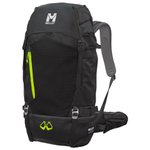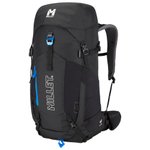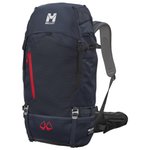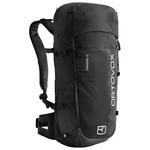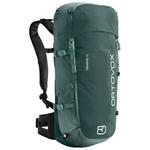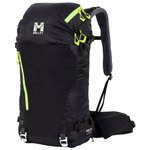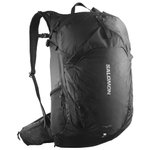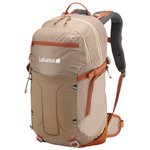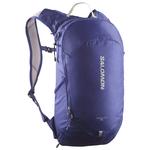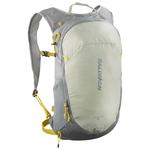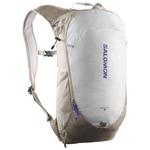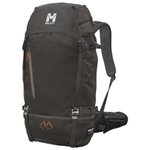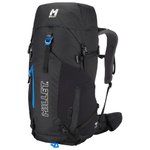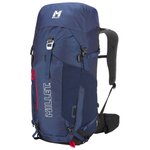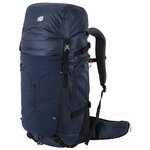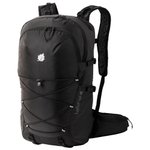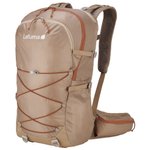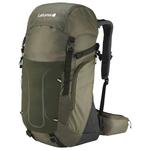Hiking backpack with pole holder: the choice of discerning hikers
The use of trekking poles has become widespread in hiking to relieve joints and improve balance. But where to store them when not in use? This is where the hiking backpack with a pole holder comes in, now the top choice for seasoned hikers. In this buying guide, we explain the advantages of a hiking backpack with a pole holder and the different models available.
Read more Show less
 Deals
Deals
-
Recommended price
£165.21
-45%
£90.39

 Deals
Deals
-
Recommended price
£139.11
-41%
£81.69
-

 Deals
Deals
-
Recommended price
£165.21
-45%
£90.39

 Deals
Deals
-
Recommended price
£121.71
-43%
£68.64

 Deals
Deals
-
Recommended price
£82.56
-10%
£73.86
-

 Deals
Deals
-
Recommended price
£104.31
-50%
£52.11
The Lafuma Access 20 Venti Black is a sustainable, water-resistant backpack made of recycled materials, designed for hiking with features like hydration system compatibility, adjustable straps, and secure pockets.

 Deals
Deals
-
Recommended price
£56.46
-13%
£48.63

 Deals
Deals
-
Recommended price
£165.21
-40%
£99.09

 Deals
Deals
-
Recommended price
£173.91
-35%
£113.01

 Deals
Deals
-
Recommended price
£113.01
-40%
£67.77
-

 Deals
Deals
-
£104.31

 Deals
Deals
-
Recommended price
£104.31
-37%
£65.16
-

 Deals
Deals
-
Recommended price
£113.01
-40%
£67.77
-

 Deals
Deals
-
Recommended price
£139.11
-20%
£110.40

 Deals
Deals
-
£156.51

 Deals
Deals
-
Recommended price
£86.91
-40%
£52.11

 Deals
Deals
-
Recommended price
£78.21
-30%
£54.72
-

 Deals
Deals
-
Recommended price
£104.31
-35%
£66.90
-

 Deals
Deals
-
Recommended price
£82.56
-15%
£69.51
-

 Deals
Deals
-
£56.46

 Deals
Deals
-
Recommended price
£56.46
-40%
£33.84
Loading...
The advantages of a hiking backpack with a pole holder
Choosing a backpack with a pole holder offers several undeniable benefits:
- Hands-free and increased safety: Fixing your trekking poles to the backpack frees your hands on technical terrain (steep sections, scrambling) or during breaks. It improves balance and reduces the risk of falling. You can also use your free hands to check a map, take photos, or have a snack without hassle.
- Walking comfort and reduced fatigue: A well-designed pole holder keeps the poles secure, preventing them from swinging. It helps avoid imbalance and vibrations. Storing the poles when terrain is flat or on road sections gives your arms a rest. Use them again for climbs or technical descents to save energy.
- Optimised storage and organisation: Pole holder systems (often straps or bungees) save interior space by storing poles outside. This leaves more room inside for gear (jacket, water, snacks…). Poles stay accessible without having to unpack your bag.
- Versatility for other gear: Most pole holders can also secure other items like ice axes, tripods, or tent poles. Choosing a backpack with a pole holder adds flexibility to carry all your hiking or camping gear.
Different types of pole holder backpacks available
The market offers a wide variety of hiking backpacks with pole holders. Here are several categories based on their intended use:
Lightweight and minimalist packs (fast hiking, trail, running)
For day hikers who value speed or sport walking, ultra-light models inspired by trail running are available (around 10–20 L). These emphasise lightness and compactness while still offering pole attachments. Examples include the Salomon Trailblazer 10 (10 L), or the Osprey Talon Velocity 20 and Talon 22 – both around 700–800 g with effective pole holders and great support. These minimalist models suit performance-oriented hikers who pack light.
Technical and versatile packs (multi-season, multi-activity)
This category covers 20 to 40 L backpacks for year-round use. They come with multiple features: pole holders, ski straps, ice axe holders, hydration compatibility, etc. A great example is the Millet Ubic 30, with its Variloop system for attaching any gear. Another is the Deuter Futura 32, a mountain hiking pack with a ventilated back panel and excellent comfort. These technical models are ideal for frequent hikers needing a reliable pack in all conditions.
Large trekking and long-distance rucksacks
For long treks, larger volumes (50–70 L) are needed. Trekking backpacks have reinforced support and multiple fastening options. Solid pole holders are crucial. Examples include the Lafuma Yukon 50+10 or the Deuter Aircontact 55+10. Though heavier, these packs are built for carrying 15 kg or more and remain comfortable. They often include rain covers, hip belt pockets, and clever compartments. Perfect for multi-week treks or expeditions.
Practical tips to get the most from your pole holder backpack
Once you've chosen your hiking backpack, here are some tips to make the most of your pack with a pole holder and extend its lifespan:
- Secure your poles properly: Slide the pole tips into a lower loop (or side mesh pocket) and secure the top with a strap or elastic. Fold your poles if telescopic. Cover tips to avoid snags or injuries. Rubber tip protectors help.
- Balance your load: If poles are on one side, counterbalance with a similar-weight item on the other (e.g., water bottle). Some packs let you fix a pole on each side. Aim for a symmetrical load.
- Anticipate the terrain: Stow or retrieve your poles before reaching tricky areas. Store them before via ferrata or rocky climbs. Take them out again on rolling or downhill terrain to relieve your knees.
- Maintain straps and holders: Rinse muddy or salty straps in warm water and dry. Store the pack away from sunlight. Detach poles to avoid deforming straps over time.
- Adjust on the go: Retighten compression straps if poles swing. If your pack gets lighter during the day, re-compress it. A well-adjusted pack boosts comfort and prevents pain.
Follow these tips to get the best from your pole holder backpack. For a broader look at hiking packs, check out our comprehensive guide on how to choose the right backpack!
To compare even more models and find the perfect pack for your needs, explore collections from these brands: Lafuma models, Millet selection, Osprey options, and Deuter backpacks. These pages gather top current models and special offers to help you make the best choice.

